Plant Growth and Water Purification of Porous Vegetation Concrete Formed of Blast Furnace Slag, Natural Jute Fiber and Styrene Butadiene Latex
Abstract
:1. Introduction
2. Materials and Methods
2.1. Materials
2.2. Mix Proportions
2.3. Test Methods
2.3.1. Void Ratio
2.3.2. Compressive Strength
2.3.3. Freeze–Thaw Cycles
2.3.4. Plant Growth
2.3.5. Water Purification
3. Results and Discussion
3.1. Void Ratio
3.2. Compressive Strength
3.3. Repeated Freezing–Thawing Cycles
3.4. Plant Growth
3.5. Water Purification
3.6. Optimum Mix
4. Conclusions
- (1)
- Characterization of the physical and mechanical properties of the porous vegetation concrete showed that mixtures that contained latex exhibited favorable compressive strength, void ratio and freeze–thaw resistance.
- (2)
- Vegetation growth tests showed that plant growth was more active when blast furnace slag aggregate was used. The use of latex was also found to promote plant growth, which is attributed to the latex forming a film coating that prevents toxic compounds from being leached from the cement.
- (3)
- A water purification test revealed no clear differences among the mixtures. Comparisons of mixes with and without vegetation showed greater water purification effects on phosphorate-phosphorus and total phosphorus with vegetation.
- (4)
- The mix containing blast furnace slag aggregate and latex satisfied all of the target performance metrics; i.e., compressive strength of ≥12MPa, a void ratio of ≥25%, and residual compressive strength following 100 freeze–thaw cycles of 80%, as well as excellent plant growth and water purification properties. For these reasons, this mix was identified as the optimal mixture.
Acknowledgments
Author Contributions
Conflicts of Interest
References
- Kim, H.H.; Kang, S.M.; Park, J.S.; Park, S.W.; Jeon, J.H.; Lee, J.H.; Cha, S.S.; Park, C.G. Performance evaluation of porous hwang-toh concrete using blast furnace slag cement. J. KSAE 2010, 52, 9–17. [Google Scholar] [CrossRef]
- Kim, D.H.; Kim, C.S.; Park, C.G. Physical and mechanical properties of non-cement porous concrete with alkali-activator contents. J. KSAE 2013, 52, 9–17. [Google Scholar] [CrossRef]
- Kim, H.H.; Kim, C.S.; Jeon, J.H.; Park, C.G. Physical, mechanical properties and freezing and thawing resistance of non-cement porous vegetation concrete using non-sintering inorganic binder. J. KSAE 2014, 56, 37–44. [Google Scholar] [CrossRef]
- Lee, J.Y.; Park, J.S.; Park, C.G. Effect of reinforcing fiber on mechanical properties and chemical resistance of porous concrete with hwang-toh. J. KSCE 2011, 55, 65–72. [Google Scholar]
- Oh, R.O.; Kim, C.S.; Kim, H.H.; Jeon, J.H.; Kwon, W.S.; Park, C.G. Physical, mechanical and temperature properties of fiber reinforced porous green roof hwang-toh concrete. J. KSAE 2013, 55, 65–72. [Google Scholar]
- Oh, R.O.; Cha, S.S.; Park, S.Y.; Lee, H.J.; Park, S.W.; Park, C.G. Mechanical properties and water purification characteristics of natural jute fiber-reinforced non-cement alkali-activated porous vegetation blocks. Paddy Water Environ. 2014, 12, S149–S156. [Google Scholar] [CrossRef]
- Park, S.B.; Lee, B.C.; Kim, J.H.; Yun, D.Y. Planting-ability valuation of porous concrete using industrial by-products. J. KCI 2002, 14, 623–629. [Google Scholar]
- Park, S.B.; Lim, C.D. Concrete for planting. Mag. KCI 2000, 12, 38–42. [Google Scholar]
- Sung, C.Y.; Kim, Y.I. Experimental study on development of plantable concrete block using rice straw ash and application for inclined plane. J. KSAE 2003, 45, 107–114. [Google Scholar]
- Youn, J.N.; Sung, C.Y.; Kim, Y.I. Physical and mechanical properties of porous concrete using waste activated carbon. J. KSAE 2009, 51, 21–27. [Google Scholar] [CrossRef]
- Kim, H.H.; Kim, C.S.; Jeon, J.H.; Park, C.G. Effects on the Physical and Mechanical Properties of Porous Concrete for Plant Growth of Blast Furnace Slag, Natural Jute Fiber, and Styrene Butadiene Latex Using a Dry Mixing Manufacturing Process. Materials 2016, 9, 84. [Google Scholar] [CrossRef]
- Yang, K.H.; Song, J.K.; Lee, K.H. A Stress-Strain Relationship of Alkali-Activated Slag Concrete. J. KCI 2011, 23, 765–772. [Google Scholar] [CrossRef]
- Han, S.H.; Yong, M.J. The future of concrete admixture industry for low carbon, green growth. Mag. KCI 2009, 21, 41–43. [Google Scholar]
- Kim, T.H.; Tae, S.H. A Study on the Development of an Evaluation System of CO2 Emission in the Production of Concrete. J. KCI 2010, 22, 787–796. [Google Scholar]
- Mun, H.Y.; Jung, S.J.; Lim, N.K. Blast furnace slag aggregate. Mag. KCI 1997, 9, 18–22. [Google Scholar]
- Park, S.B.; Lee, B.J.; Lee, J.; Jang, Y.I. A study on the seawater purification characteristics of water-permeable concrete using recycled aggregate. Resour. Conserv. Recycl. 2010, 54, 658–665. [Google Scholar] [CrossRef]
- Song, W.-J.; Fu, H.-Y.; Wang, G.-Y. Study on a kind of ecoconcrete retaining wall’s block with water purification function. Procedia Eng. 2012, 28, 182–189. [Google Scholar]
- Land & Housing Institute. Development of Technology for the Field Application of Blast-furnace Slag Powder Concrete; Korea Land & Housing Corporation: Seong-Nam, Korea, 2013. [Google Scholar]
- Korea Ministry of Environment. Waste Processing Test Methods; Korea Ministry of Environment: Seoul, Korea, 2004.
- Korea Ministry of Environment. Performance Standard for Environment Mark Certification (Permeableconcrete-EL245–2003/4/2012–36); Korea Ministry of Environment: Seoul, Korea, 2015.
- American Society for Testing and Materials. Standard Test Method for Compressive Strength of Cylindrical Concrete Specimens; ASTM C39/C39M-15a; ASTM International: West Conshohocken, PA, USA, 2015. [Google Scholar]
- American Society for Testing and Materials. Standard Test Method for Resistance of Concrete to Rapid Freezing and Thawing; ASTM C666/C666M-15; ASTM International: West Conshohocken, PA, USA, 2015. [Google Scholar]
- Korea Ministry of Land, Infrastructure and Transport. Designing and Constructing Direction of Road Slope Planting; Korea Ministry of Environment: Seoul, Korea, 2009.
- Ministry of Koran Environment. Environmental Official Testing Method; Ministry of Koran Environment: Seoul, Korea, 2015.
- Han, S.H. Strength Characteristics of Concrete Containing Blast-Furnace Slag as Coarse Aggregate. J. KCI 2000, 12, 559–568. [Google Scholar]
- Lanzoni, L.; Nobili, A.; Tarantino, A.M. Performance evaluation of a polypropylene-based draw-wired fibre for concrete structures. Constr. Build. Mater. 2012, 28, 798–806. [Google Scholar] [CrossRef]
- Nobili, A.; Lanzoni, L.; Tarantino, A.M. Experimental investigation and monitoring of a polypropylene-based fiber reinforced concrete road pavement. Constr. Build. Mater. 2013, 47, 888–895. [Google Scholar] [CrossRef]
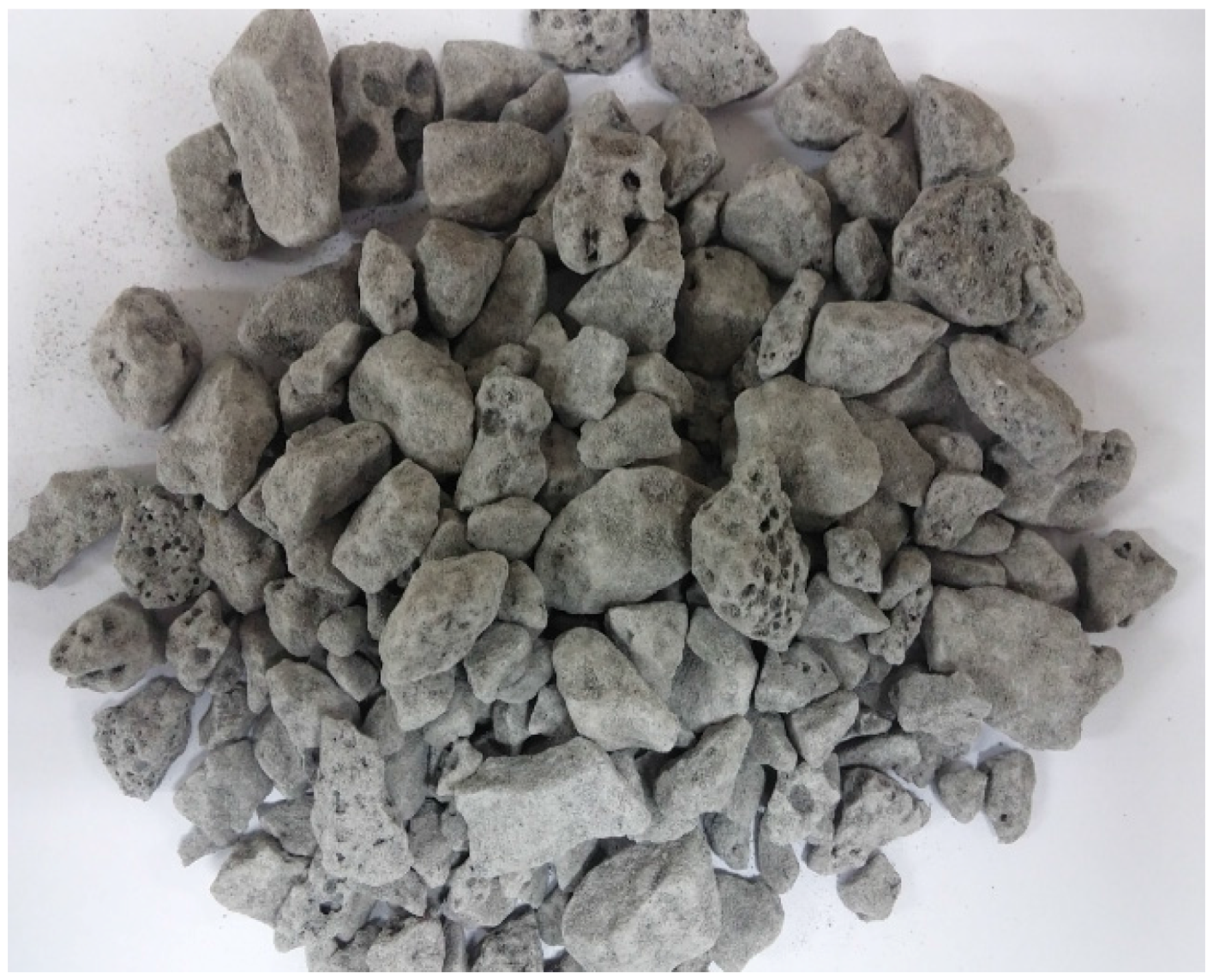
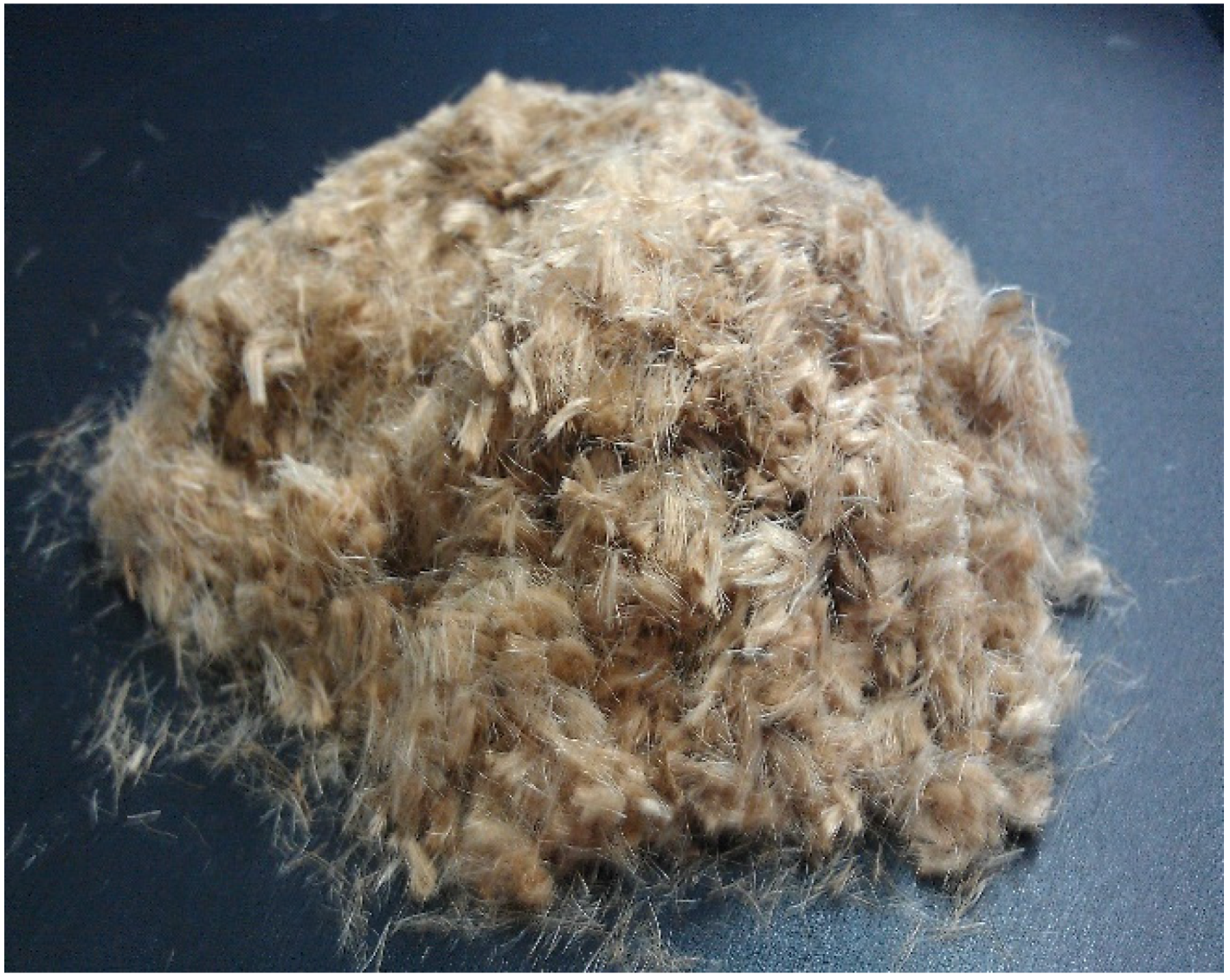
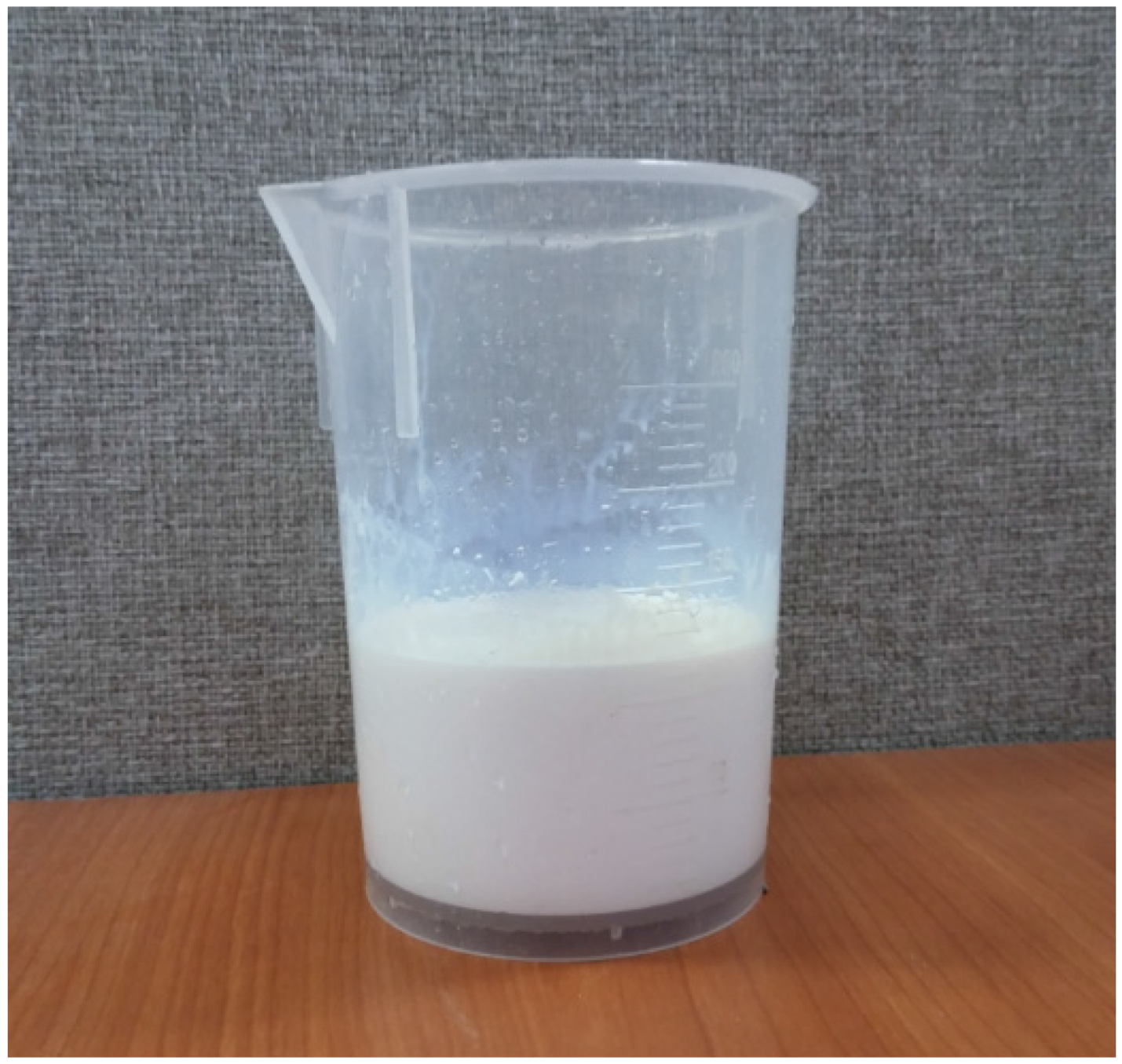
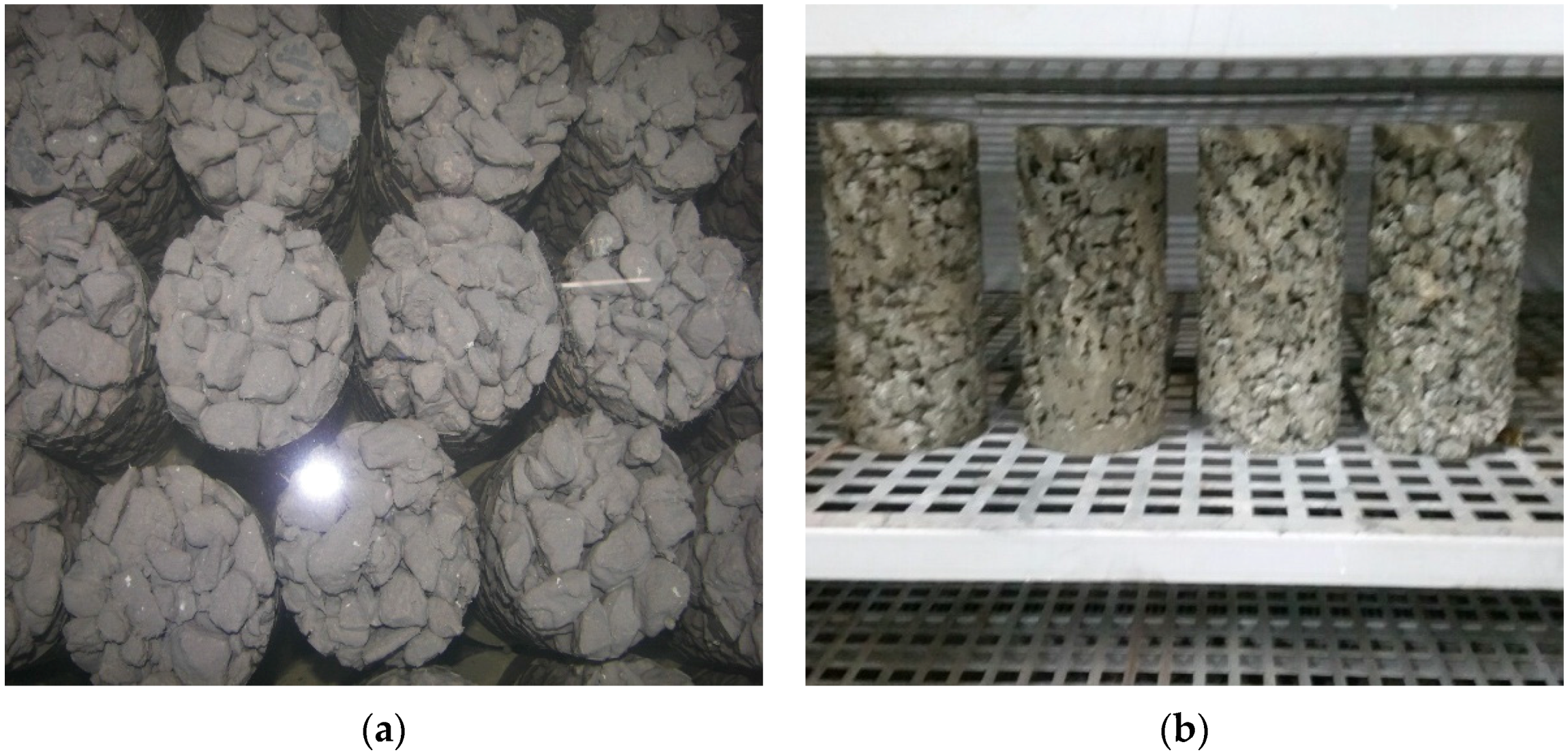
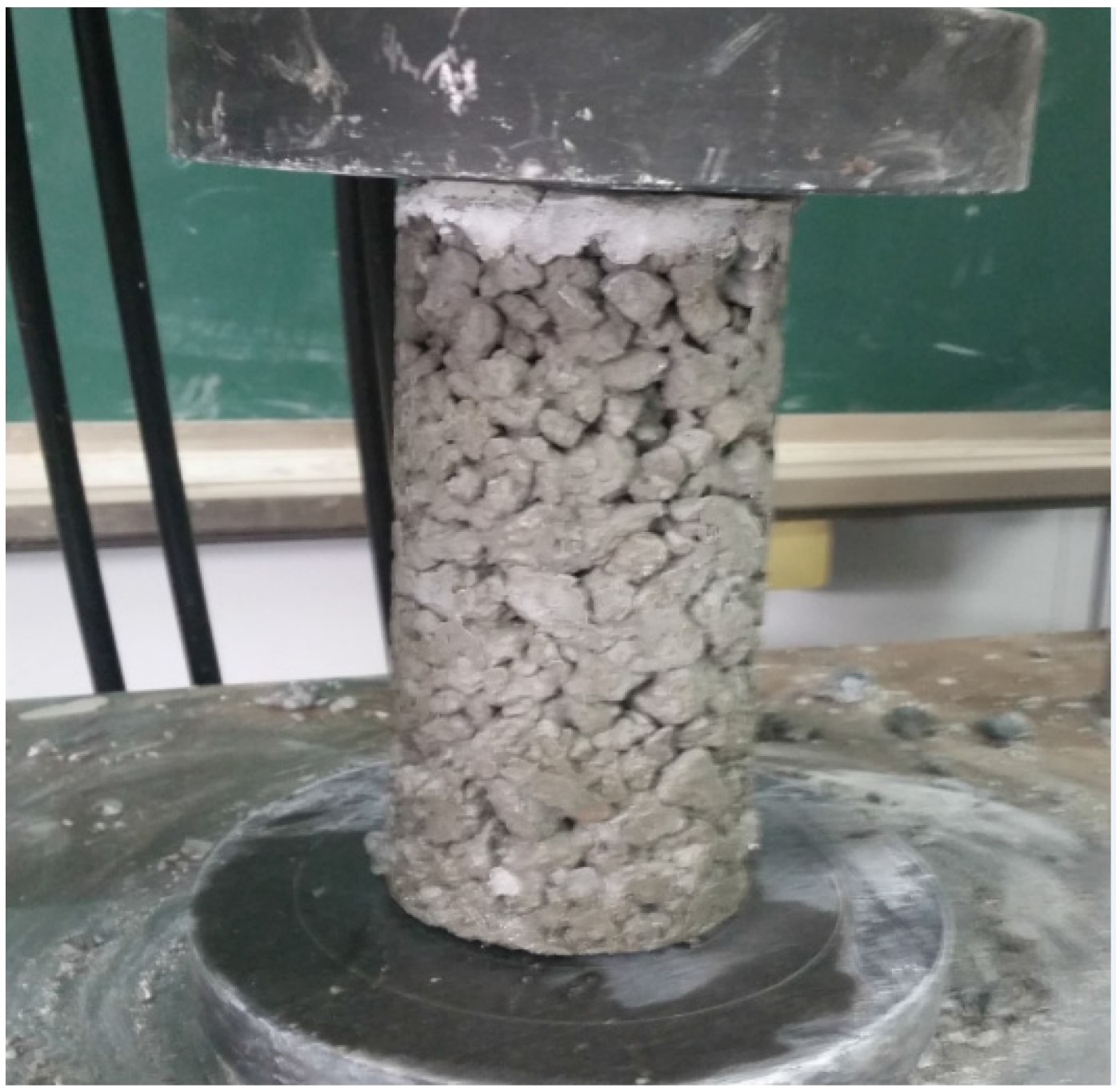
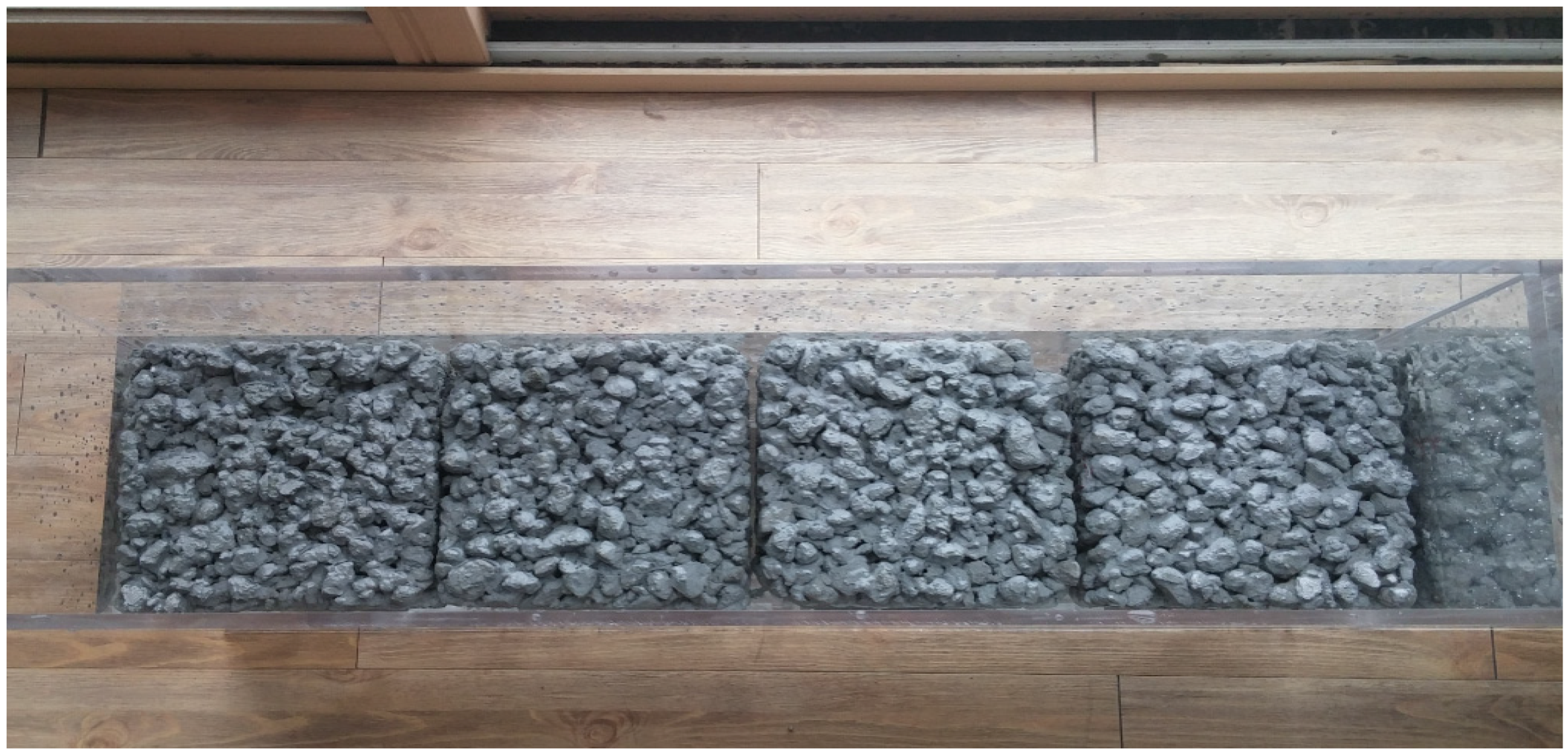
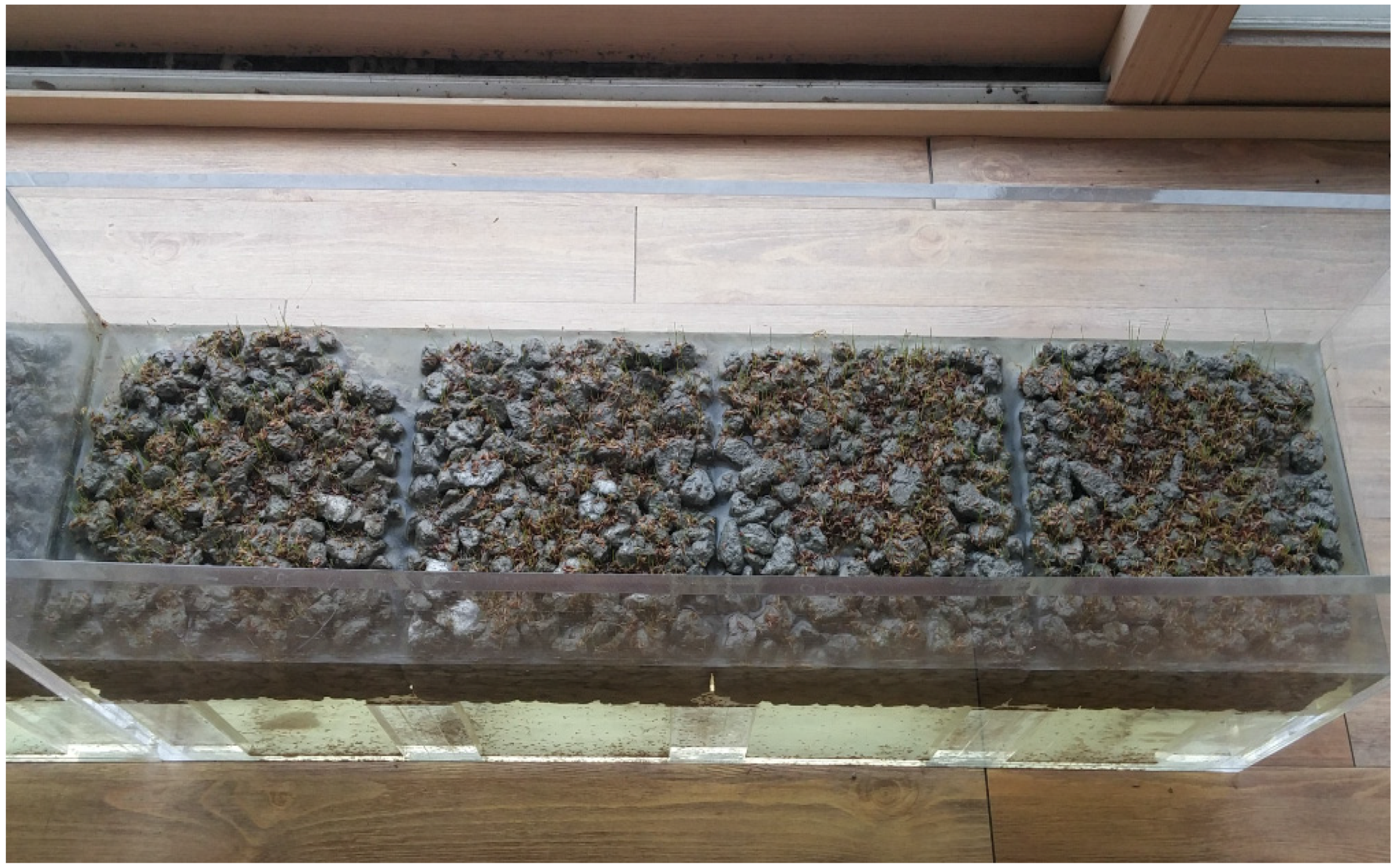

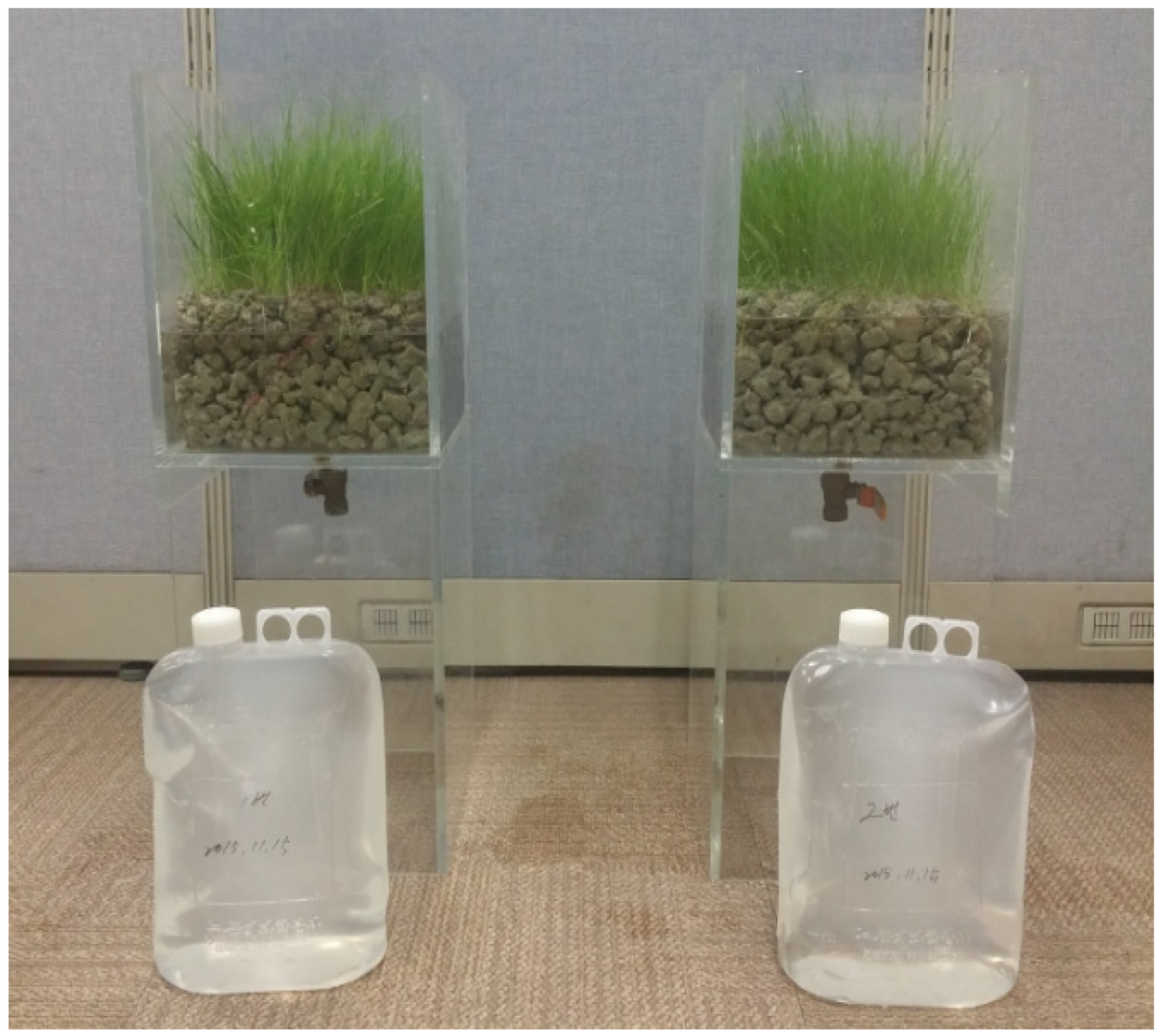
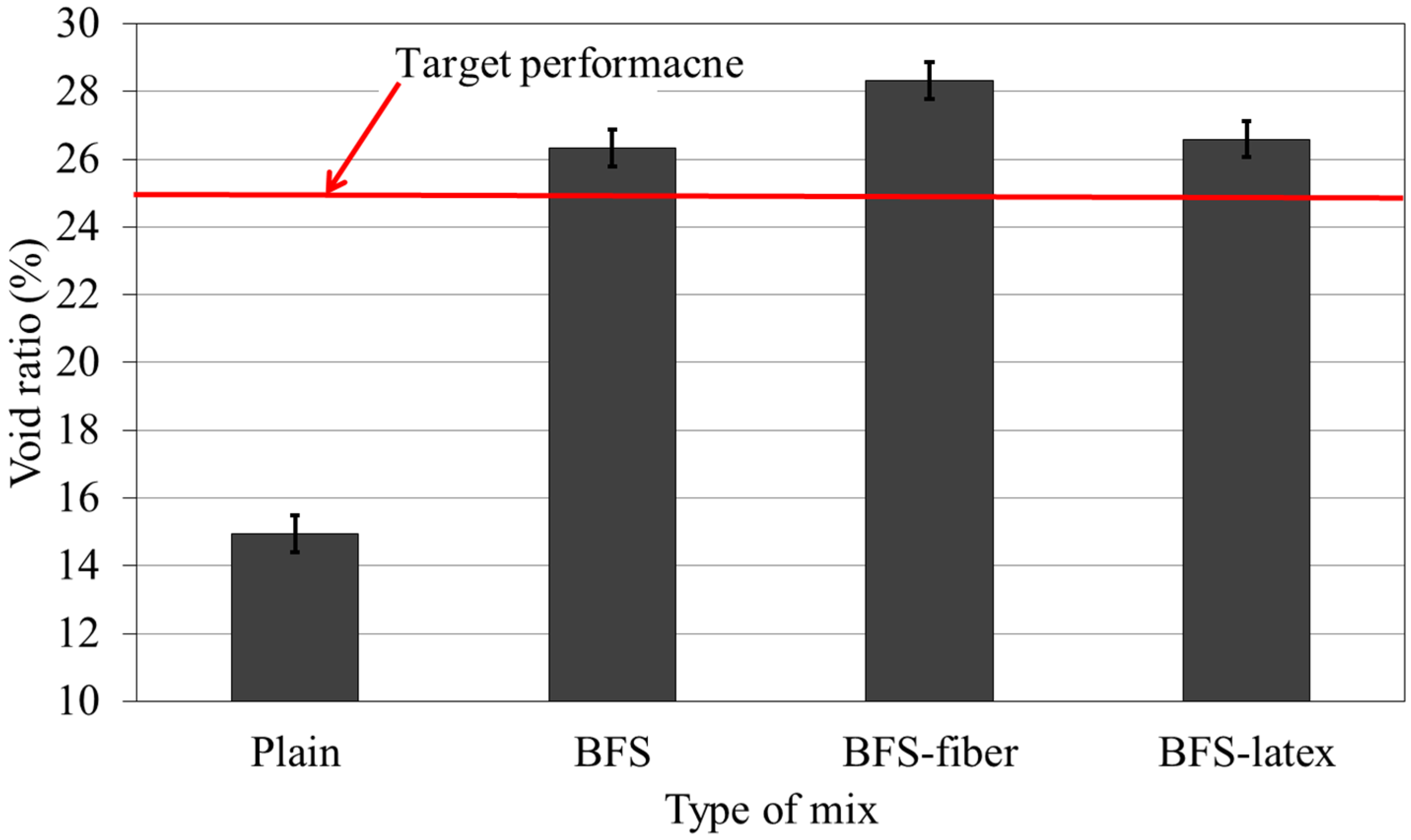
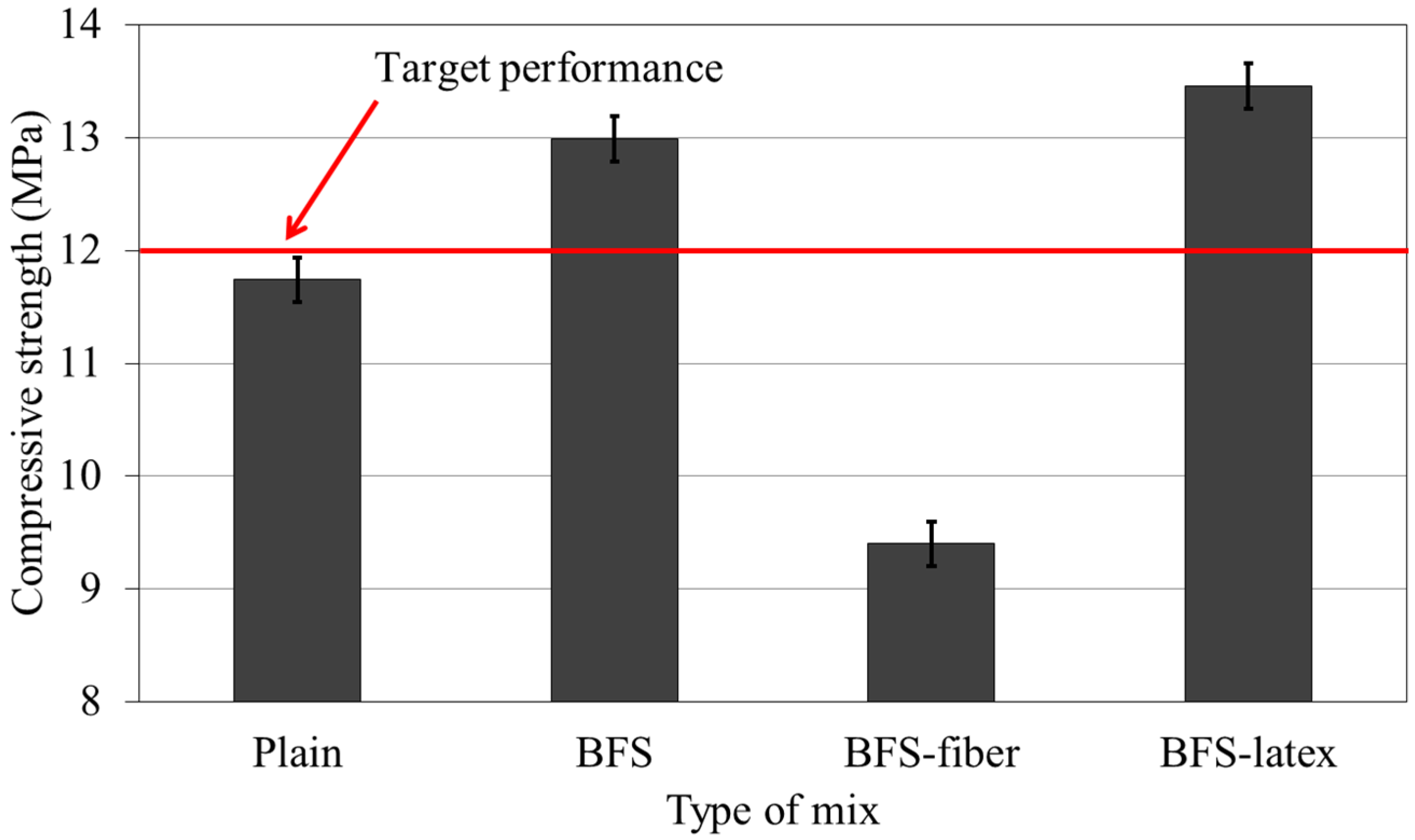
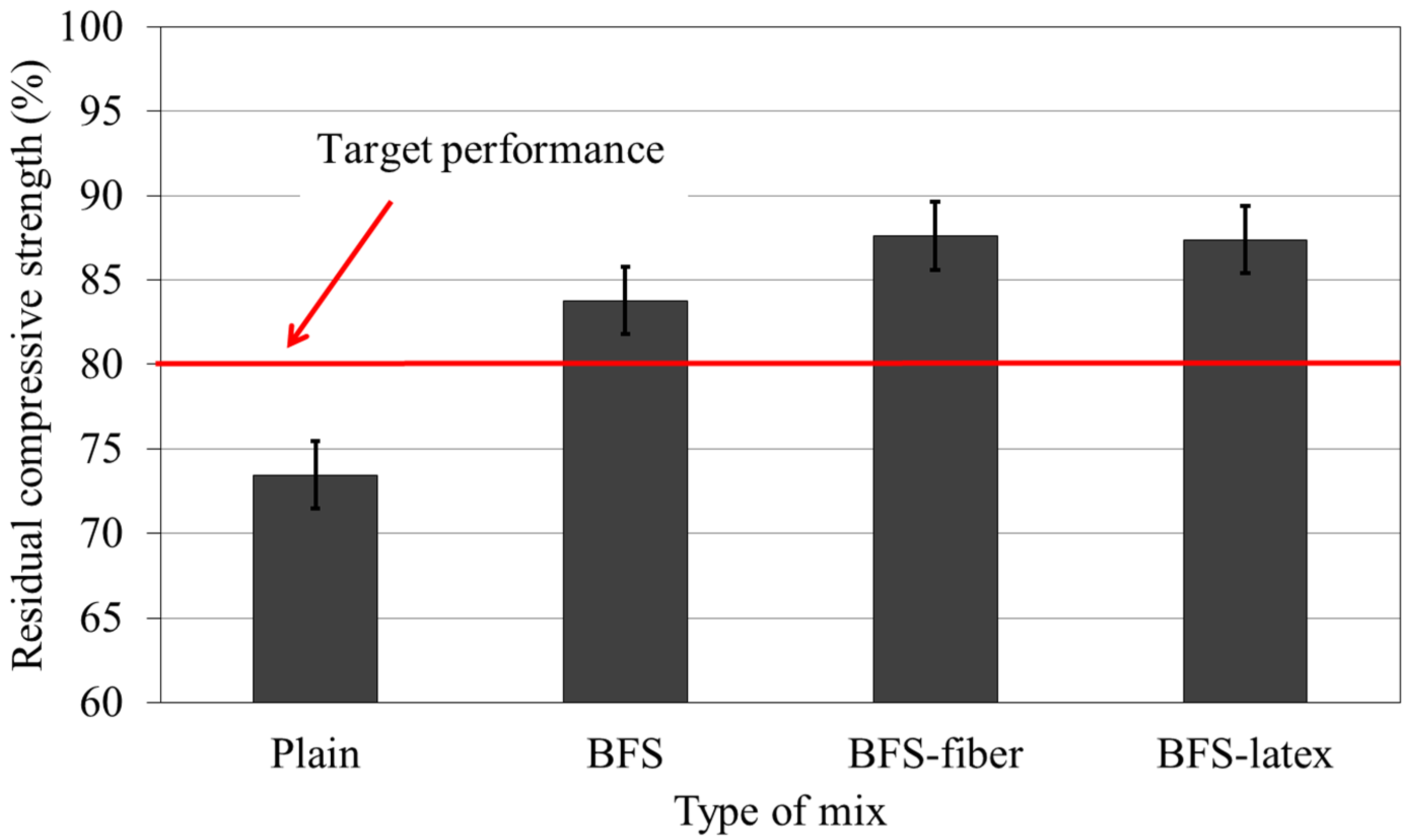
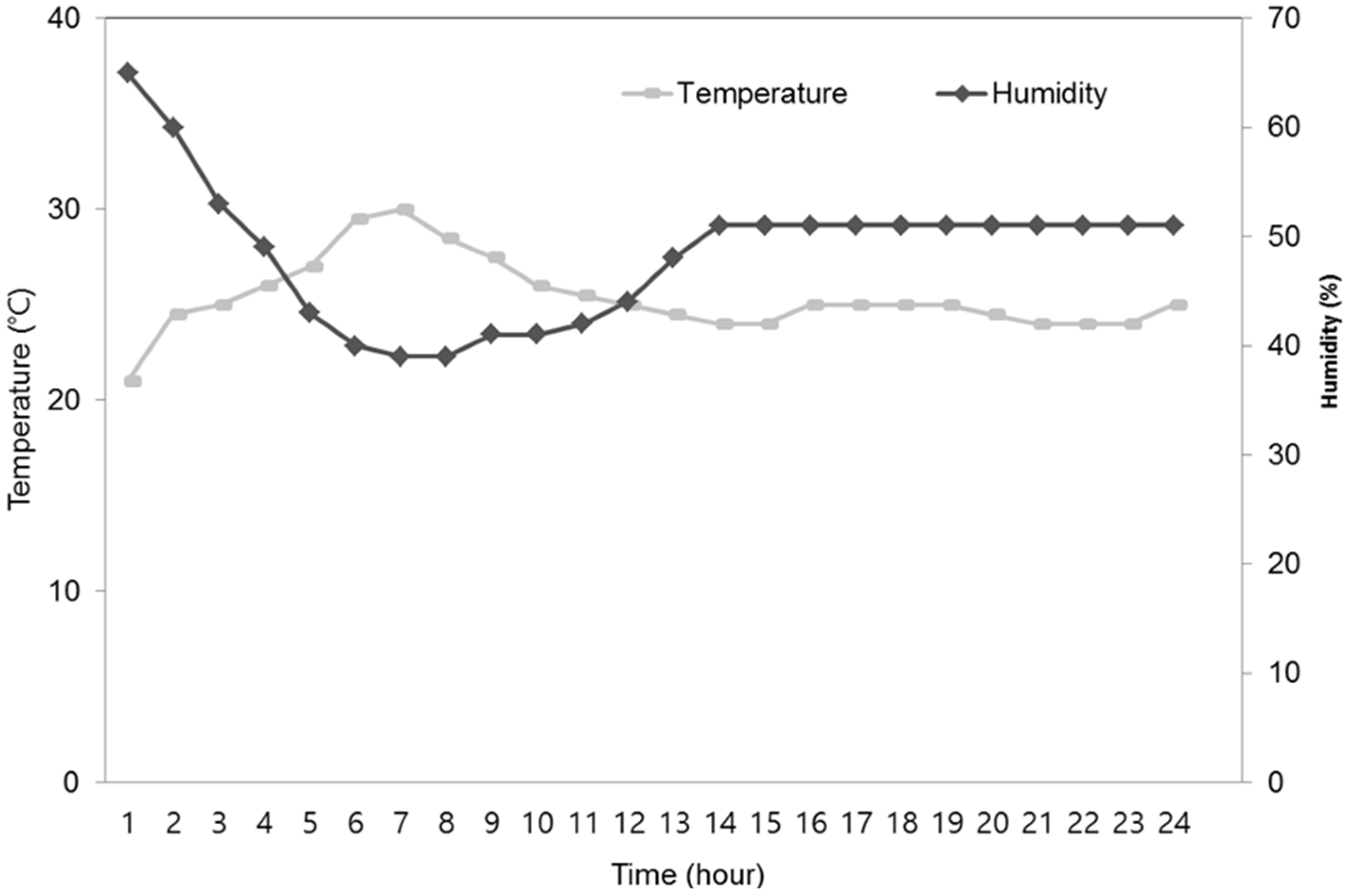
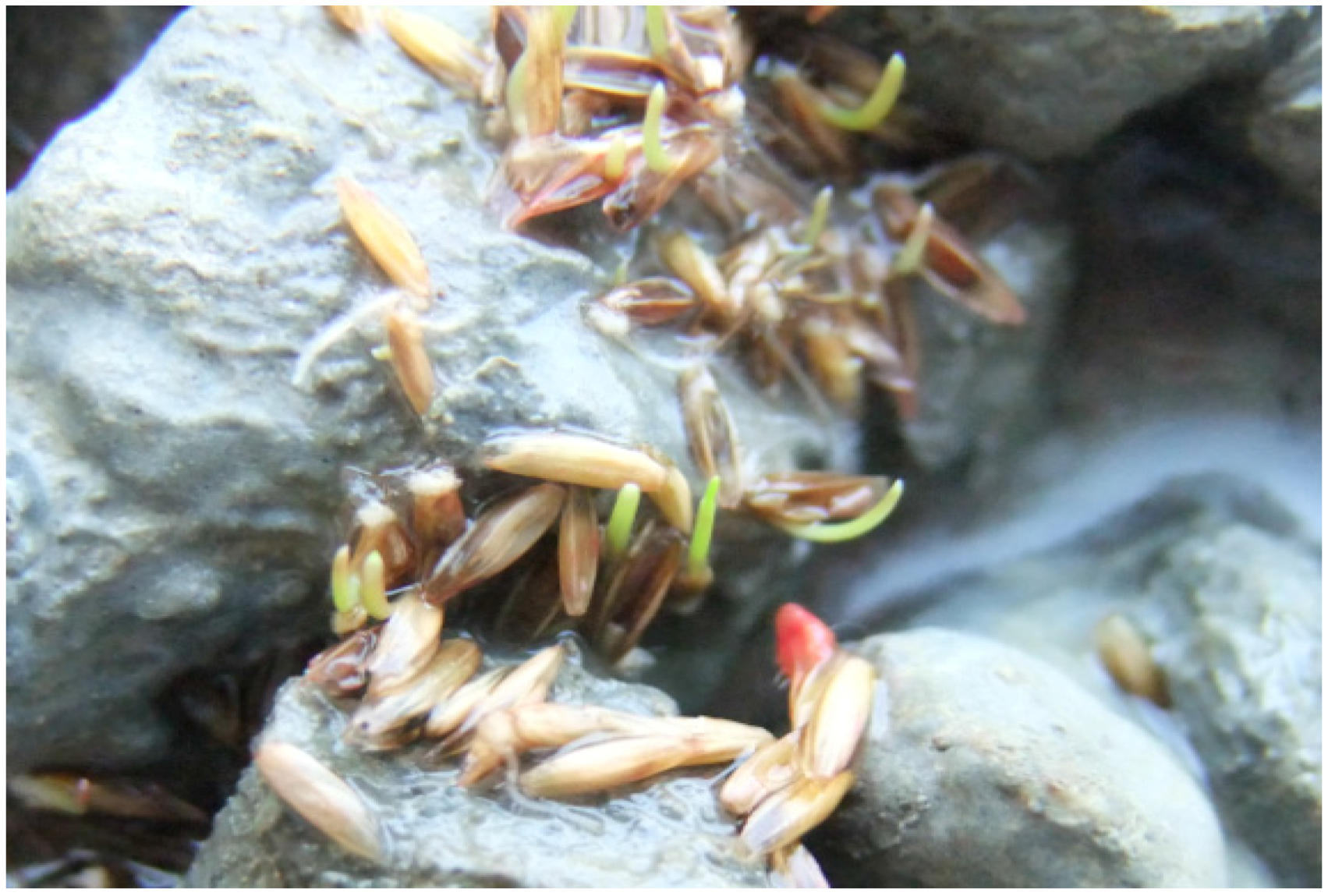
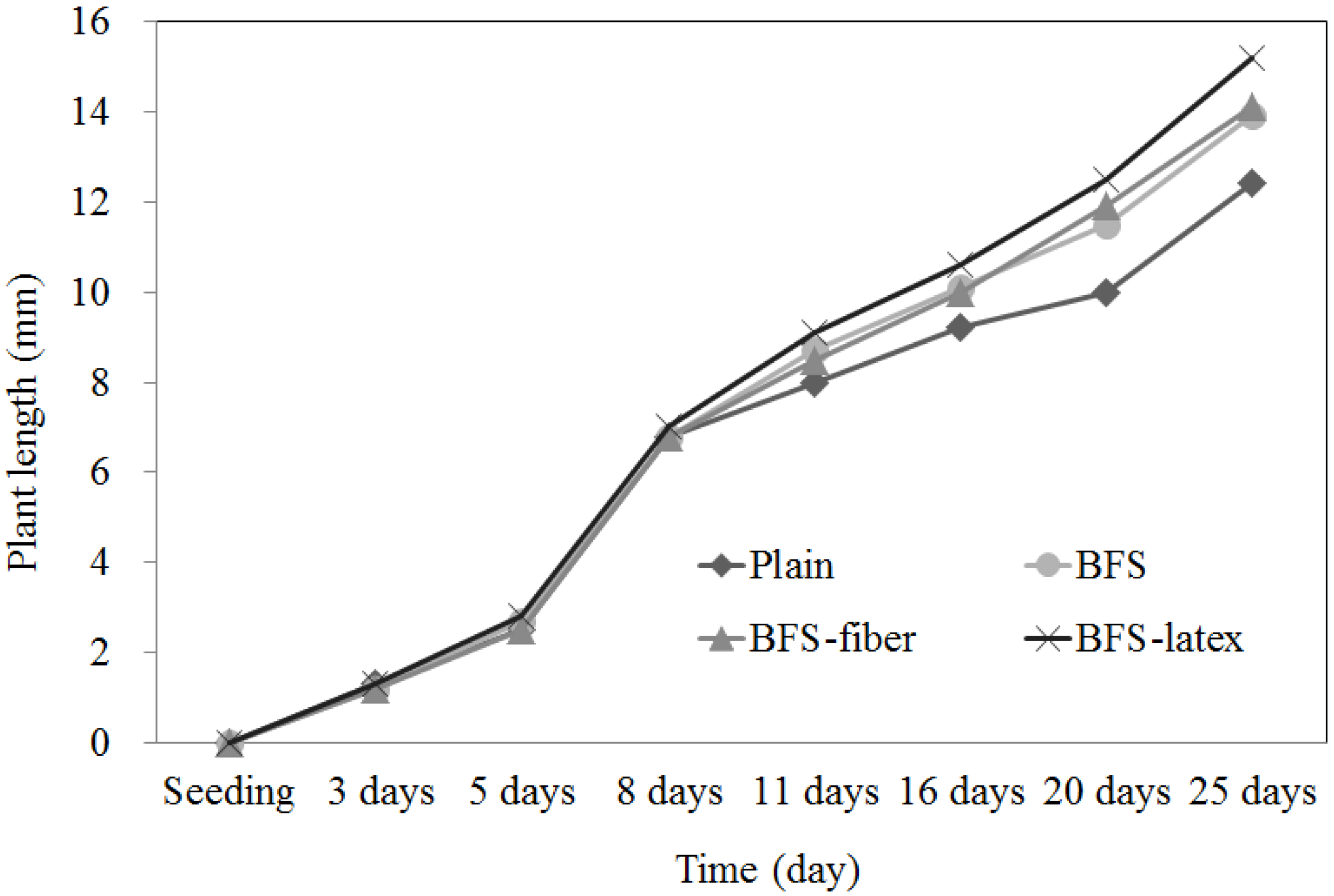
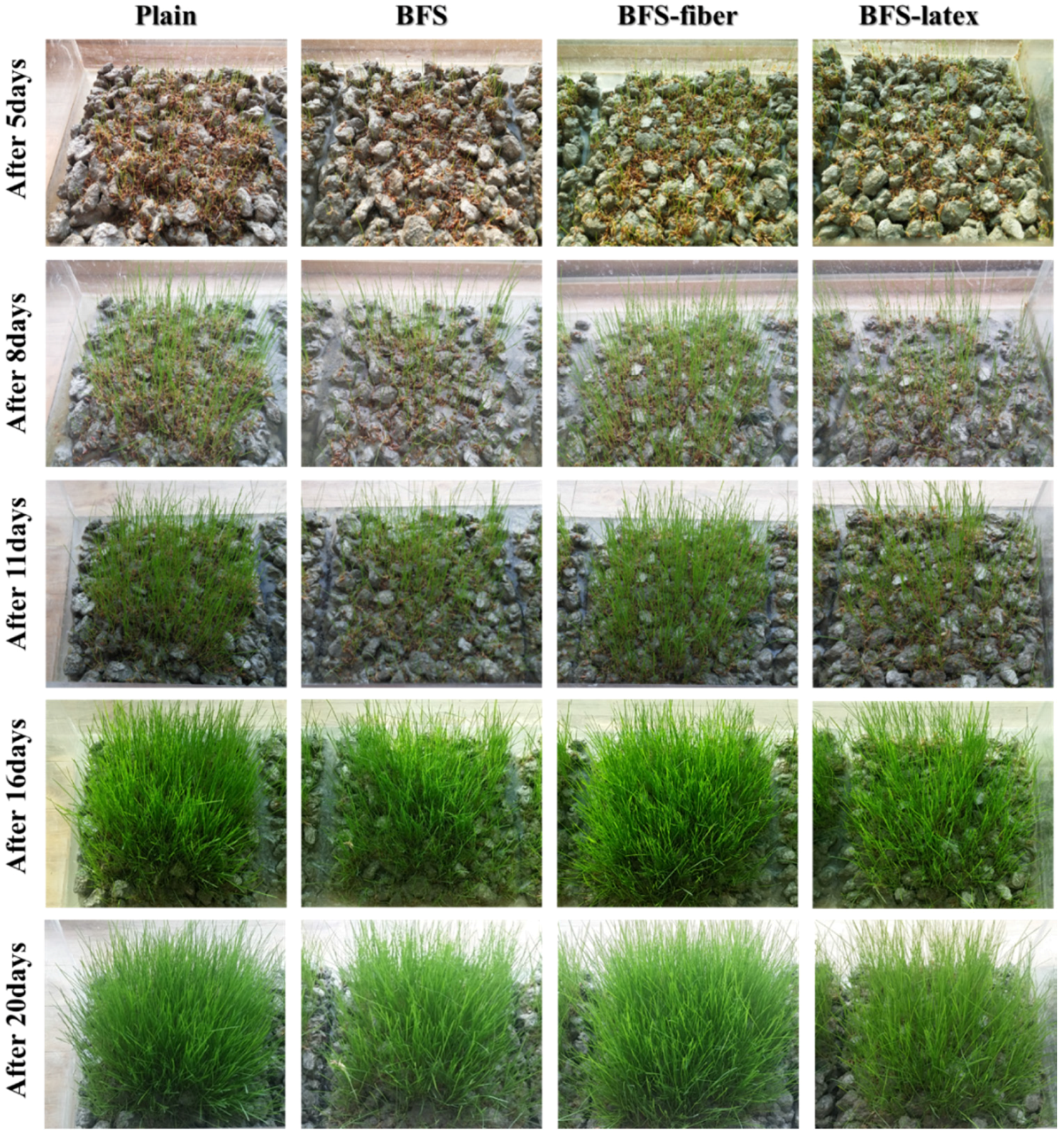
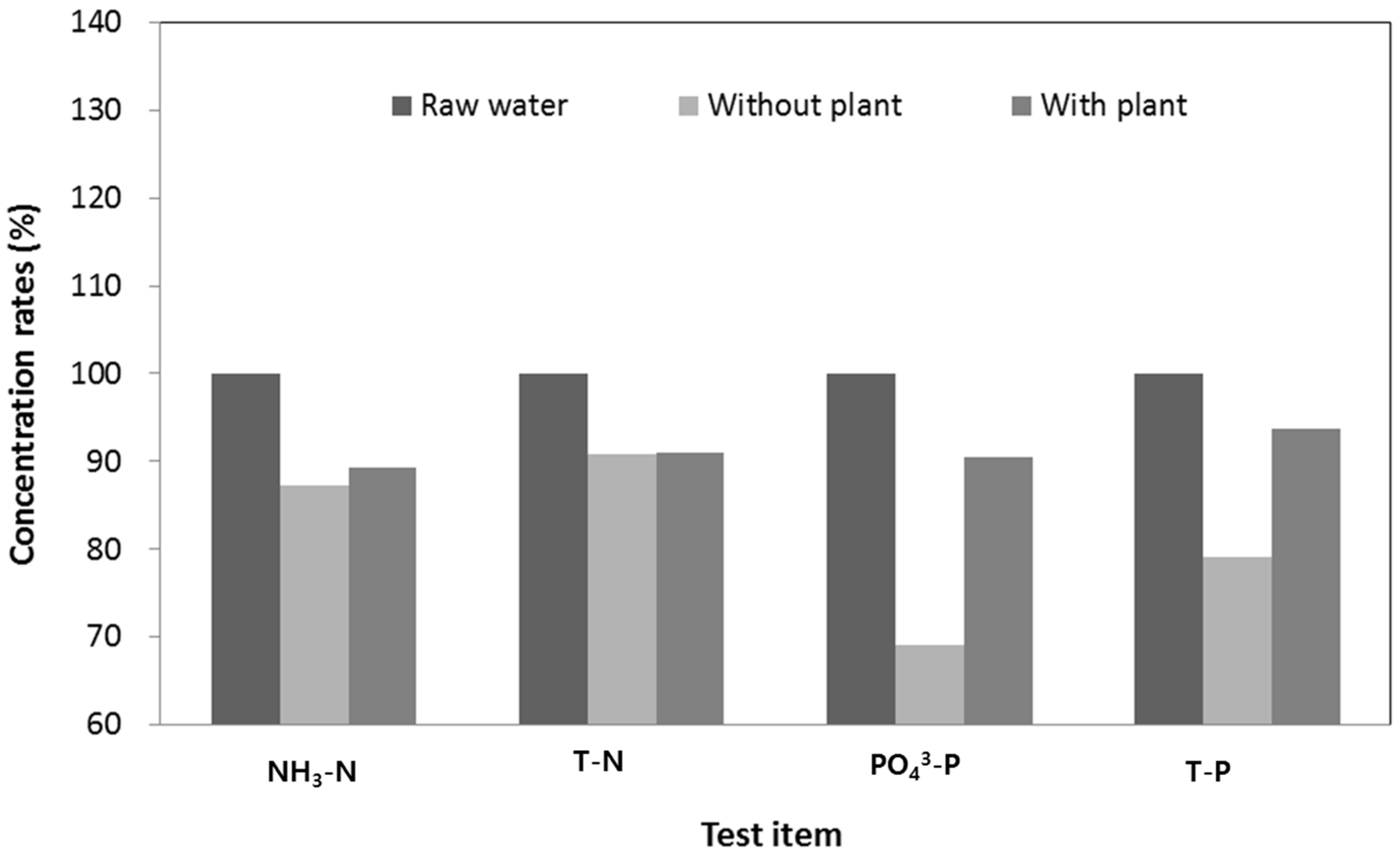
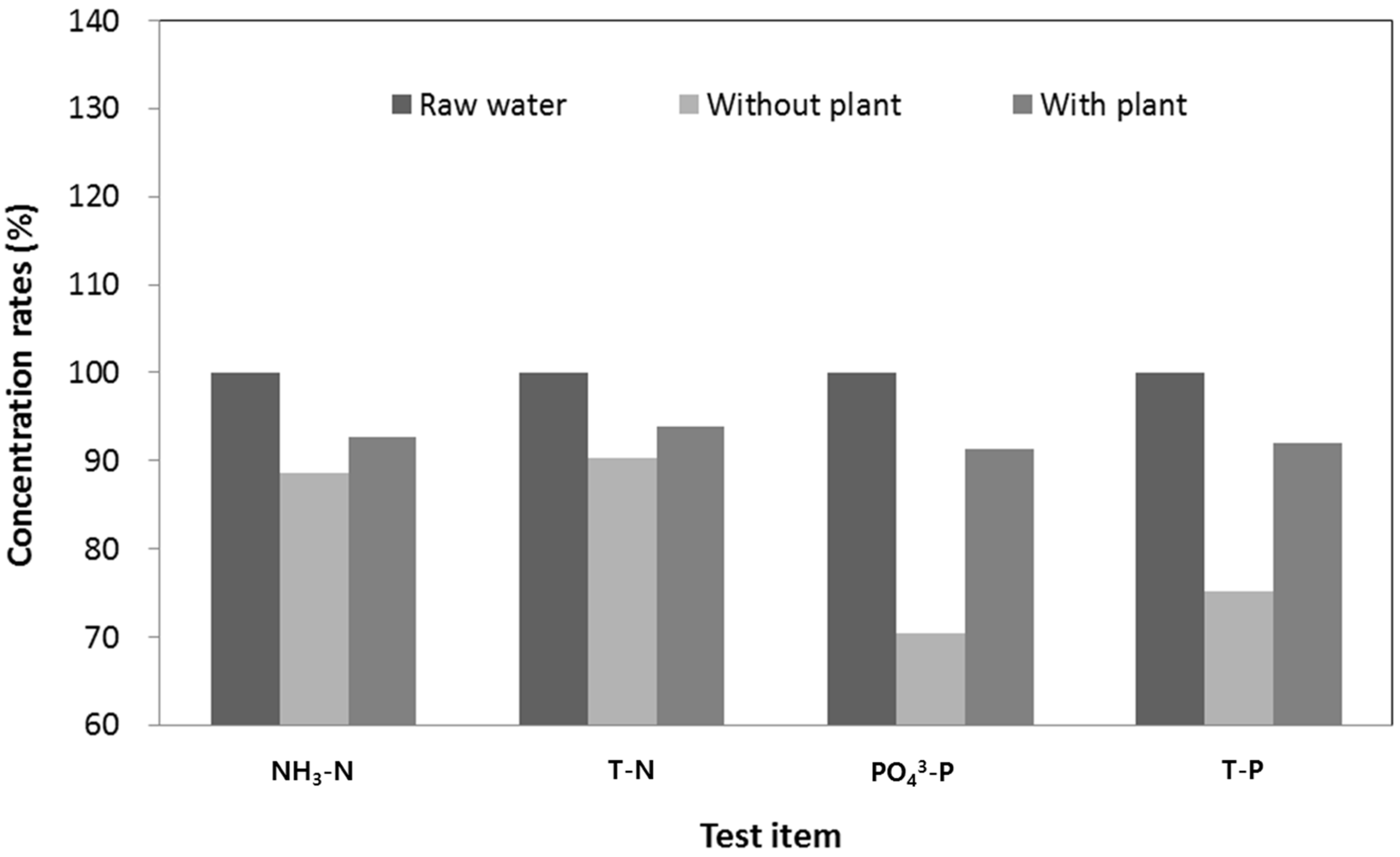
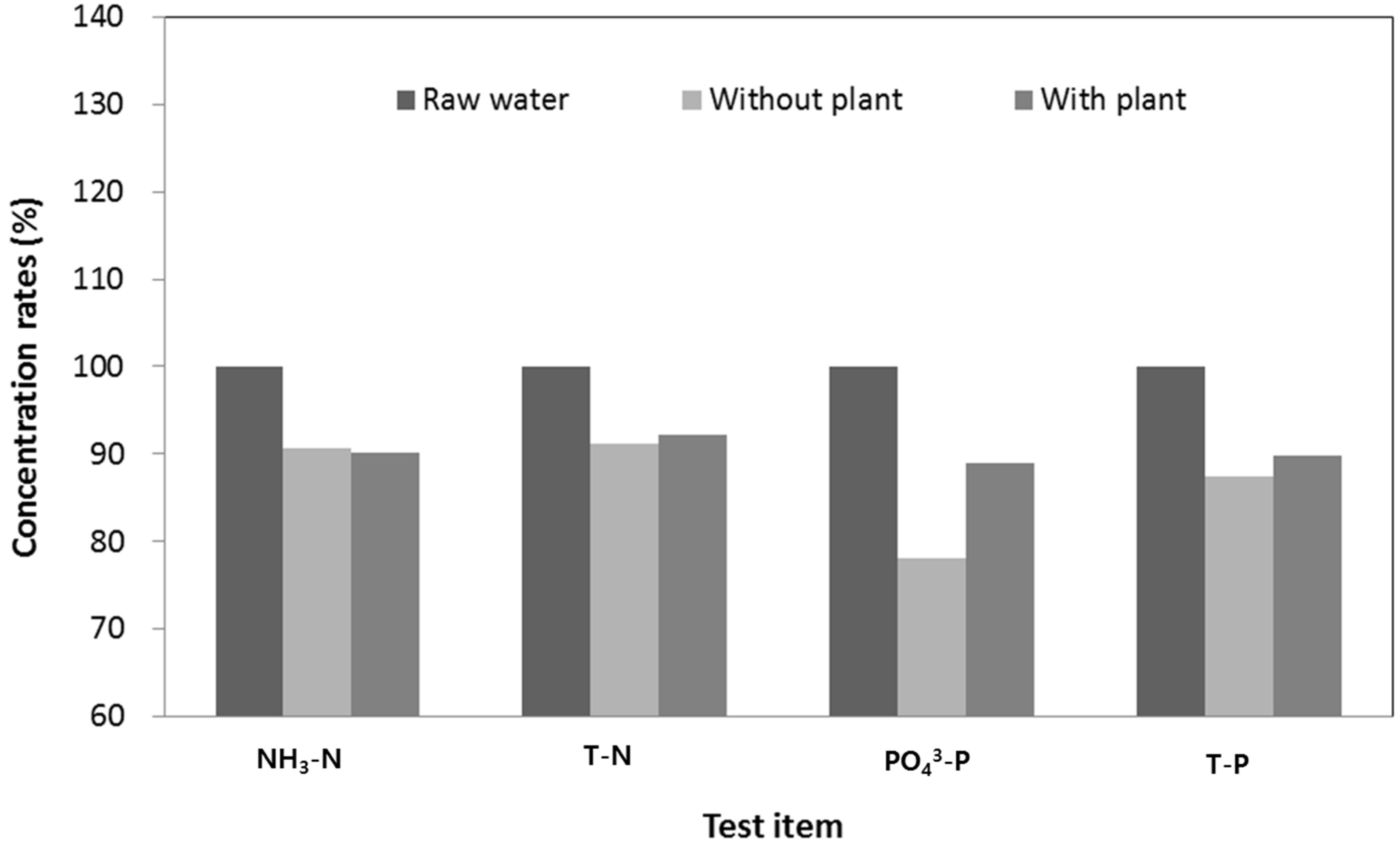
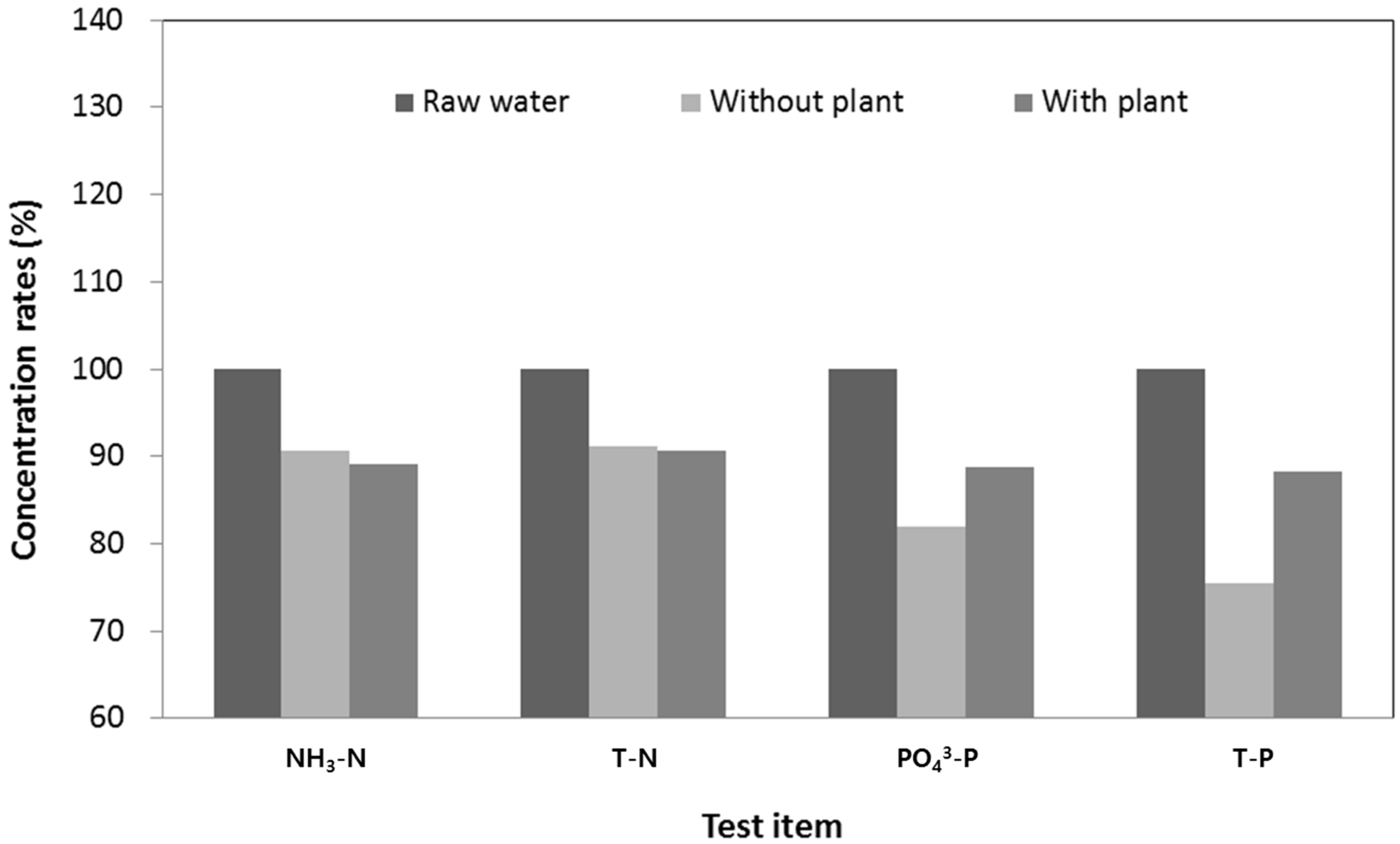
| Properties | Value | |
|---|---|---|
| Fineness (cm2/g) | 4330 | |
| Density (kg/L) | 3.02 | |
| Stability (%) | 1 | |
| Setting time (Gillmore needle) | Initial set (min) | 265 |
| Final set (hour:min) | 6:15 | |
| Compressive strength (MPa) | 3 day | 20.6 |
| 7 day | 29.8 | |
| 28 day | 54.5 | |
| Properties | Blast Furnace Slag Aggregate | Crushed Aggregate |
|---|---|---|
| Density (kg/L) | 2.36 | 2.65 |
| Water absorption ratio (%) | 5 | 0.35 |
| Fineness modulus | 6.75 | 6.92 |
| Test Items | Unit | Value | Remark (Standard) | |
|---|---|---|---|---|
| Pb | mg/L | N/A | ≤ | 3 |
| Cr | N/A | ≤ | 1.5 | |
| Cu | N/A | ≤ | 3 | |
| Cd | N/A | ≤ | 0.3 | |
| As | N/A | ≤ | 1.5 | |
| Hg | N/A | ≤ | 0.005 | |
| CN− | N/A | ≤ | 1 | |
| Organophosphorus | N/A | ≤ | 1 | |
| Trichloroethylene | N/A | ≤ | 0.3 | |
| Tetrachloroethylene | N/A | ≤ | 0.1 | |
| Oil composition | % | ≤0.1 | ≤ | 5 |
| Elastic Modulus (GPa) | Density (g/mm3) | Fiber Length (mm) | Fiber Diameter (mm) | Tensile Strength (MPa) | Surface |
|---|---|---|---|---|---|
| 61 | 1.26 | 3 | 0.015 | 510 | Hydrophilic |
| Solids Content (%) | Styrene Content (%) | Butadiene Content (%) | pH | Density (g/mm3) | Surface Tension (dyne/cm) | Particle Size (Å) | Viscosity (cps) |
|---|---|---|---|---|---|---|---|
| 49 | 34 ± 1.5 | 66 ± 1.5 | 11.0 | 1.02 | 30.57 | 1700 | 42 |
| Mix Code | Unit Weight (kg/m3) | |||||
|---|---|---|---|---|---|---|
| Water | Blast Furnace Slag Cement | Aggregate | Fiber | Latex | ||
| 25 mm | Blast Furnace Slag | |||||
| Plain | 79 | 306 | 1412 | 0 | 0 | 0 |
| BFS | 79 | 306 | 847 | 565 | 0 | 0 |
| BFS-fiber | 79 | 306 | 847 | 565 | 1.2 | 0 |
| BFS-latex | 75 | 306 | 847 | 565 | 0 | 6.2 |
| Unit Weight (kg/m3) | ||||
|---|---|---|---|---|
| Water | Blast furnace slag cement | Aggregate | Latex | |
| 25 mm | Blast furnace slag | |||
| 75 | 306 | 847 | 565 | 6.2 |
© 2016 by the authors; licensee MDPI, Basel, Switzerland. This article is an open access article distributed under the terms and conditions of the Creative Commons Attribution (CC-BY) license (http://creativecommons.org/licenses/by/4.0/).
Share and Cite
Kim, H.-H.; Park, C.-G. Plant Growth and Water Purification of Porous Vegetation Concrete Formed of Blast Furnace Slag, Natural Jute Fiber and Styrene Butadiene Latex. Sustainability 2016, 8, 386. https://doi.org/10.3390/su8040386
Kim H-H, Park C-G. Plant Growth and Water Purification of Porous Vegetation Concrete Formed of Blast Furnace Slag, Natural Jute Fiber and Styrene Butadiene Latex. Sustainability. 2016; 8(4):386. https://doi.org/10.3390/su8040386
Chicago/Turabian StyleKim, Hwang-Hee, and Chan-Gi Park. 2016. "Plant Growth and Water Purification of Porous Vegetation Concrete Formed of Blast Furnace Slag, Natural Jute Fiber and Styrene Butadiene Latex" Sustainability 8, no. 4: 386. https://doi.org/10.3390/su8040386
APA StyleKim, H.-H., & Park, C.-G. (2016). Plant Growth and Water Purification of Porous Vegetation Concrete Formed of Blast Furnace Slag, Natural Jute Fiber and Styrene Butadiene Latex. Sustainability, 8(4), 386. https://doi.org/10.3390/su8040386





